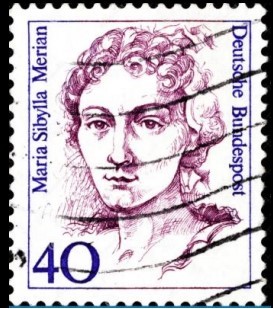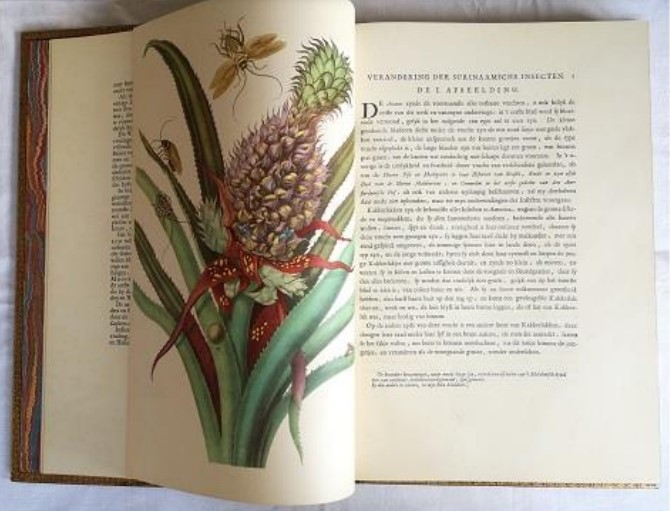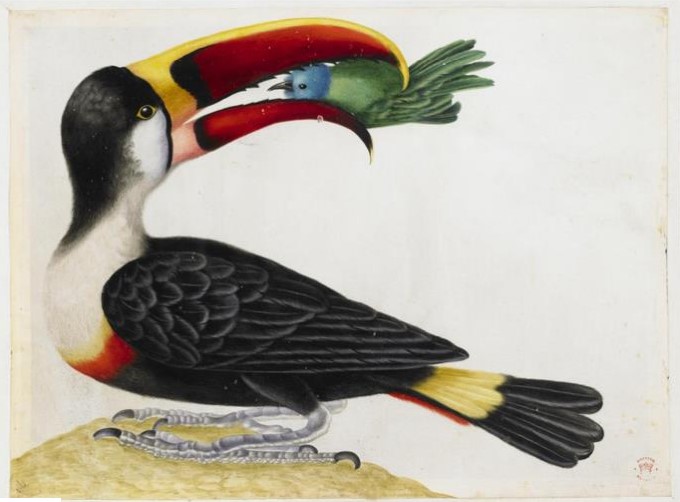
In this History of Prints episode of Platemark, host Ann Shafer and subject matter expert Tru Ludwig explore the extraordinary life and legacy of Maria Sibylla Merian. Celebrated for her pioneering work on insect metamorphosis and her detailed...
In this History of Prints episode of Platemark, host Ann Shafer and subject matter expert Tru Ludwig explore the extraordinary life and legacy of Maria Sibylla Merian. Celebrated for her pioneering work on insect metamorphosis and her detailed illustrations of flora and fauna, Merian's journey took her to Suriname where she documented local species with the help of native people and slaves. Despite the societal constraints of the 17th century, she made significant contributions to both science and art, influencing future generations. The discussion also situates her achievements within the broader context of the Enlightenment and printmaking evolution, drawing comparisons with other naturalists like Audubon. The episode concludes with a teaser for an upcoming feature on William Hogarth, noted for his political satire.
George Peabody Library, Baltimore, MD.
Johann Zoffany (German, 1733–1810). The Academicians of the Royal Academy, 1771–72. Oil on canvas. 101.1 x 147.5 cm. Royal Collection Trust.
Maria Sibylla Merian (Dutch, 1647–1717) on the 500 Deutsche Mark.
Maria Sibylla Merian (Dutch, 1647–1717) on a German postage stamp.
Jacob Marrel (German, 1613–1681). Portrait of Maria Sibylla Merian, 1679. Oil on canvas. 59 x 50.5 cm. Kunstmuseum Basel.
[DETAIL] Joachim von Sandrart I (German, 1606–1688) and Philipp Kilian (German, 1628–1693). Detail of Portraits of Michel le Blond, Aegidius Sadeler, Georg Petele, Matthaus Merian, Renbrant a Rhen, Carol Screta, c. 1683. Engraving. Plate: 12 1/4 × 7 7/8 in. (31.1 × 20 cm.); sheet: 12 3/4 × 8 3/8 in. (32.4 × 21.3 cm.). Detroit Institute of Arts, Detroit.
Wenceslaus Hollar (Flemish, 1607–1677). Muff with a band of brocade, 1647. Etching. Plate: 11.3 x 8.3 cm. Museum of New Zealand Te Papa Tongarewa, Wellington, New Zealand.
Matthäus Merian (Swiss, 1593–1650). Todten-Tantz Wie derselbe in der Weitberümbten Statt Basel als ein Spiegel Menschlicher beschaffenheit gantz Künstlich mit Lebendigen Farben Gemahlet, nicht ohne nutzliche Verwunderung zusehen ist. Basel: Mieg, 1621. Thüringer Landesmuseum Heidecksburg.
Jacob Marrel (German, 1613–1681). Four Tulips: (Boterman, Joncker, Grote geplumaceerde, and Voorwint), c. 1635–45. Watercolor on vellum. 13 3/8 x 17 11/16 in. Metropolitan Museum of Art, New York.
Rachel Ruysch (Dutch, 1664–1750). Festoon with Flowers and Fruit, 1682. Oil on canvas. 38 x 33 cm. National Gallery of Prague.
Maria Sibylla Merian (Dutch, 1647–1717 ). Plate 5 from volume 1 of Der Raupen wunderbare Verwandlung und sonderbare Blumennahrung (The Caterpillars' Marvelous Transformation and Strange Floral Food). Germany: self-published, 1679.
Jan Goedaert (German, 1617–1668). Study for and engraving of metamorphosis of a moth.
Tru Ludwig (American, born 1959). Dumb Luck, 2009. Two-plate etching, printed à la poupée. Plate: 37 ½ x 27 in.; sheet (42 x 30 in.). Courtesy of the Artist.
Jacobus Houbraken (Dutch, 1698–1780), after Georg Gsell (Swiss, 1673–1740). Portrait of Maria Sibylla Merian. Engraving with hand coloring, frontispiece in Der Rupsen Begin, Voedzel en Wonderbaare Verandering. Waar in De Oorspronk, Spys en Gestaltverwisseling; als ook de Tyd, Plaats en Eigenschappen de Rupsen, Wormen, Kapellen, Uiltjes, Vliegen, en andere diergelyke bloedelooze Beesjes vertoond word. Amsterdam: self-published, 1717.
Maria Sibylla Merian (Dutch, 1647–1717). Neues Blumenbuch. Nuremberg: self-published, 1680.
Maria Sibylla Merian (Dutch, 1647–1717). Blumenbuch. Nuremberg: Johann Andreas Graff, 1675.
Maria Sibylla Merian (Dutch, 1647–1717). Illustration of a Turk's cap lily (Lilium superbum) from Merian's New Book of Flowers, 1680.
Maria Sibylla Merian (Dutch, 1647–1717). Titlepage from Der Raupen wunderbare Verwandlung und sonderbare Blumennahrung (The Caterpillars' Marvelous Transformation and Strange Floral Food). Germany: self-published, 1679.
Jim Dine (American, born 1935). The Temple of Flora, 1984. San Francisco, Arion Press, 1984.
Maria Sibylla Merian (Dutch, 1647–1717). A Pineapple Surrounded by Cockroaches, c. 1701–05. Watercolor and gouache on vellum. British Museum, London.
Maria Sibylla Merian (Dutch, 1647–1717). Merian's 'forest rat' or opossum (Didelphimorphia) carrying her young. Detail from plate 66 of Metamorphosis Insectorum Surinamensium. Amsterdam: self-published, 1705.
Maria Sibylla Merian (Dutch, 1647–1717). Plate (frog) from Metamorphosis Insectorum Surinamensium. Amsterdam: self-published, 1705.
Maria Sibylla Merian (Dutch, 1647–1717). Metamorphosis Insectorum Surinamensium ofte Verandering der Surinaamsche Insecten. Amsterdam: self-published, 1705.
Maria Sibylla Merian (Dutch, 1647–1717). Ripe Pineapple with Dido Longwing Butterfly, 1702–03. Watercolor and gouache with gum arabic over lightly etched outlines on vellum. 43.5 x 28.8 cm. Royal Collection Trust, London.
Maria Sibylla Merian (Dutch, 1647–1717). Ripe Pineapple with Dido Longwing Butterfly, from the book, Metamorphosis Insectorum Surinamensis. Amsterdam: Johannes Oosterwyk, 1718.
Maria Sibylla Merian (Dutch, 1647–1717). Plate (praying mantes) from Metamorphosis Insectorum Surinamensium. Amsterdam: self-published, 1705.
Maria Sibylla Merian (Dutch, 1647–1717). Plate (snake) from Metamorphosis Insectorum Surinamensium. Amsterdam: self-published, 1705.
Maria Sibylla Merian (Dutch, 1647–1717). Plate (tarantula) from Metamorphosis Insectorum Surinamensium. Amsterdam: self-published, 1705.
[DETAIL] Maria Sibylla Merian (Dutch, 1647–1717). Plate (tarantula) from Metamorphosis Insectorum Surinamensium. Amsterdam: self-published, 1705.
Maria Sibylla Merian (Dutch, 1647–1717). Plate (tarantula) from Metamorphosis Insectorum Surinamensium. Amsterdam: self-published, 1705.
Maria Sibylla Merian (Dutch, 1647–1717). Plate (croc eating snake) from Metamorphosis Insectorum Surinamensium. Amsterdam: self-published, 1705.
Maria Sibylla Merian (Dutch, 1647–1717). Plate (pineapple and cockroaches) from Metamorphosis Insectorum Surinamensium. Amsterdam: self-published, 1705.
Maria Sibylla Merian (Dutch, 1647–1717). Watercolor study of Toucan for Metamorphosis Insectorum Surinamensium ofte Verandering der Surinaamsche Insecten. Amsterdam: self-published, 1705.
Maria Sibylla Merian (Dutch, 1647–1717). Plate (black tegu) from Metamorphosis Insectorum Surinamensium. Amsterdam: self-published, 1705.
Jacobus Houbraken (Dutch, 1698–1780), after Georg Gsell (Swiss, 1673–1740). Portrait of Maria Sibylla Merian. Engraving, frontispiece in Der Rupsen Begin, Voedzel en Wonderbaare Verandering. Waar in De Oorspronk, Spys en Gestaltverwisseling; als ook de Tyd, Plaats en Eigenschappen de Rupsen, Wormen, Kapellen, Uiltjes, Vliegen, en andere diergelyke bloedelooze Beesjes vertoond word. Amsterdam: self-published, 1717.
Thomas Bewick (British, 1753–1828). Title page from History of British Birds. Newcastle: Beilby & Bewick, 1797.
Thomas Bewick (British, 1753–1828). Title page from The Supplement to the History of British Birds. London: Longman and Co., 1821.
Dr. Robert Thorton (British). Flowering Cereus from The Temple of Flora, 1807. Color mezzotint. London: self-published, 1812.
John James Audobon (French-American, 1785–1851). Flamingo fron The Birds of America. London: self-published, 1827–38.
John James Audobon (French-American, 1785–1851). Carolina Parakeets from The Birds of America. London: self-published, 1827–38.
John James Audobon (French-American, 1785–1851). Hawks eating dinner from The Birds of America. London: self-published, 1827–38.
Platemark is produced by Ann Shafer
Theme music: Michael Diamond
Audio mixing: Dan Fury, Extension Audio
PR and Marketing: Elizabeth Berger, EYB Creates














































